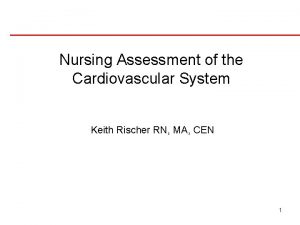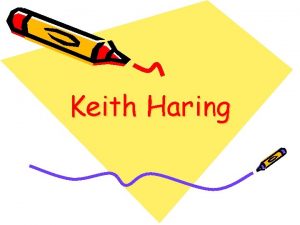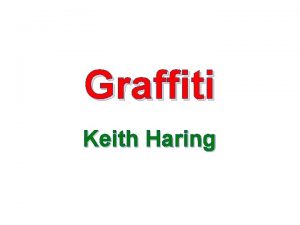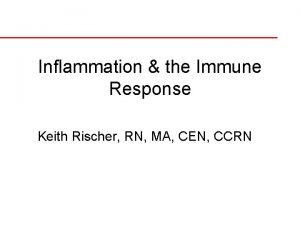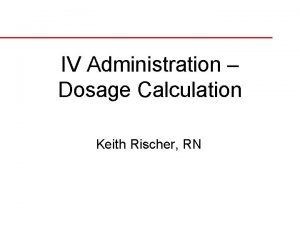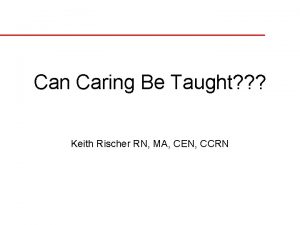Hematologic Disorders Nursing Priorities Keith Rischer RN MA




















- Slides: 20

Hematologic Disorders & Nursing Priorities Keith Rischer RN, MA, CEN 1

Objectives for Today Ø Ø Ø Review pathophysiology related to hematologic cells and blood forming tissues Interpret significance of altered hematologic lab values Review commonly used medications that alter hematologic function Identify the patho, clinical manifestations, diagnostic tests, nursing priorities, and client education in clients with anemia, sickle cell anemia, leukemia, lymphomas, and multiple myeloma. Identify the nursing priorities with blood transfusion and the most common transfusion reactions. 2

Blood Cells Ø Hematopoesis: Red bone marrow • The blood forming tissue that produces the 3 major cell components of blood ü Erythrocytes ü Leukocytes ü Thrombocytes 3

Erythrocytes • Function ü Transport of gases (O 2 & CO 2) ü Erythropoesis • • Normal Life span: 120 days Norms ü Hgb RBC – Women: 12 -16 g/dl – Men: 13. 5 -18 n g/dl ü HCT 4. 0 -5. 0 mm 3 4. 5 -6. 0 mm 3 – Women: 38 -47% – Men: 40 -54% 4

Leukocytes • Types ü Granulocytes (Also known as polymorphonuclear leukocytes) – Neutrophils – Eosinophils – Basophils 5

Leukocytes • • Monocytes agranular) Lymphocytes B cells: mediate the humoral immune response ü Ø Ø T cells: Mediate cellular immunity Normal Blood Count of all WBC: 4, 00011, 000/ul Elderly considerations 6

Thrombocytes (Platelets) • Function: Aid in blood clotting ü Maintain capillary integrity by working as “plugs” to close any openings in the capillary wall. ü • Normal Blood Count: 150, 000 -400, 000 mm 3 7

Anemia Ø Mild • Ø Moderate • Ø Hgb 10 -14 g/dl Hgb 6 -10 g/dl Severe • Hgb < 6 g/dl 8

Anemia: Causes Macrocytic § Pernicious Anemia (B 12 deficiency) § Folate deficiency Microcytic – Iron deficiency anemia Normocytic – Blood loss – Sickle cell anemia 9

Macrocytic Anemia Megaloblastic Anemias: Presence of large RBC’s) ü Caused by defective DNA synthesis Two common types: 1. Cobalamin (vitamin B 12 deficiency) – Pernicious anemia =most common cause. 2. Folic acid deficiency – – Poor nutrition (Anorexia) malabsorption in small bowel ETOH Hemodialysis PATIENT EDUCATION 10

Microcytic Anemia: Iron Deficiency Abnormal-small erythrocytes…decr. Hgb Ø Most common anemia Ø Manifestations Ø • • • Pallor Glossitis fatigue Dietary sources Ø Patient education Ø 11

Normocytic Anemia: Etiology Blood Loss • Acute • Chronic Extrinsic (acquired) hemolytic anemias – (damage to RBCs due to external factors) • Physical factors 12

ED Case Study 88 yr women w/dk tarry stools last 5 days. c/o weakness, nausea. Ø Pale, cool-initial VS 80 -16 -124/30…. 2 hours later 96 -20 -94/49 Ø Wbc 9. 8, hgb 6. 9 (was 12. 7 2 weeks ago), hct 21. 5, plt 176, INR 4. 8 (was 2. 1 2 weeks ago) Ø Nursing priorities Ø 13

Sickle Cell Anemia Patho Ø Sickle Cell Crisis Ø Nsg Management Ø • • Ø Pain control Hydration Patient Education • • • Hydration Tx infection Psychosocial 14

Thrombocytopenia Ø Ø Ø Reduction of platelets below normal range • Normal = 150, 000 -400, 000 mm 3 Etiology: • Immune Thrombocytopenic Purpura (ITP) • Heparin • Bone marrow suppression Critical values • • • 50, 000 or less- risk of bleeding <20, 000 spontaneous life threatening hemorrhages (brain bleed) <10, 000 transfusions recommended 15

Clinical Manifestations Petechiae Ø Purpura Ø Ecchymosis Ø Bleeding Ø 16

Nursing Management Ø Ø Ø If acute care-Peripheral IV established No ASA products for pain control Prevent/control acute bleeding Platelet transfusions-assess for reaction Steroids-pt. teaching Education-signs of bleeding 17

Blood Product Administration Minimum 22 g. (blue hub) IV-prefer 20 g. (pink) or 18 g. (green) Ø Blood tubing with filter-use NS to prime/flush Ø • • • Validate pt. , type of blood product, expiration date, blood tag # VS before, 15” after initiation, end of each Infuse PRBC’s over 2 hours (appx 300 cc/unit) 18

Complications Blood Products Ø Circulatory Overload Acute Hemolytic Reaction • Chills, fever, flushing, tachycardia, SOB, hypotension, acute renal failure, shock, cardiac arrest, death Febrile-Nonhemolytic Reaction • Sudden onset of chills, fever, temp elevation >1 degree C. headache, anxiety Mild Allergic Reaction • Flushing, urticaria, hives 19

Nursing Responsibilities STOP transfusion Ø Maintain IV site-disconnect from IV and flush with NS Ø Notify blood bank/MD Ø Recheck ID Ø Monitor VS Ø Treat sx per MD orders Ø Save bag and tubing-send to blood bank Ø 20
 Keith rischer
Keith rischer Amiodarone side effects
Amiodarone side effects 12 lead ekg
12 lead ekg 5 cardiac landmarks
5 cardiac landmarks Hypochromic red cells
Hypochromic red cells Hematologic system assessment
Hematologic system assessment Chapter 19 endocrine and hematologic emergencies
Chapter 19 endocrine and hematologic emergencies Nursing assessment order
Nursing assessment order Who analgesic ladder
Who analgesic ladder Pneumatic reduction of intussusception
Pneumatic reduction of intussusception Nursing care of male patients with genitourinary disorders
Nursing care of male patients with genitourinary disorders Nursing diagnosis for pud
Nursing diagnosis for pud Nanda nursing diagnosis for eye disorders
Nanda nursing diagnosis for eye disorders Cross curricular priorities
Cross curricular priorities Two person seat carry
Two person seat carry Defense priorities and allocations system
Defense priorities and allocations system Goals and priorities
Goals and priorities 6 quality priorities
6 quality priorities Www.xkcd.com
Www.xkcd.com Patrol bases
Patrol bases National core standards priorities
National core standards priorities

























